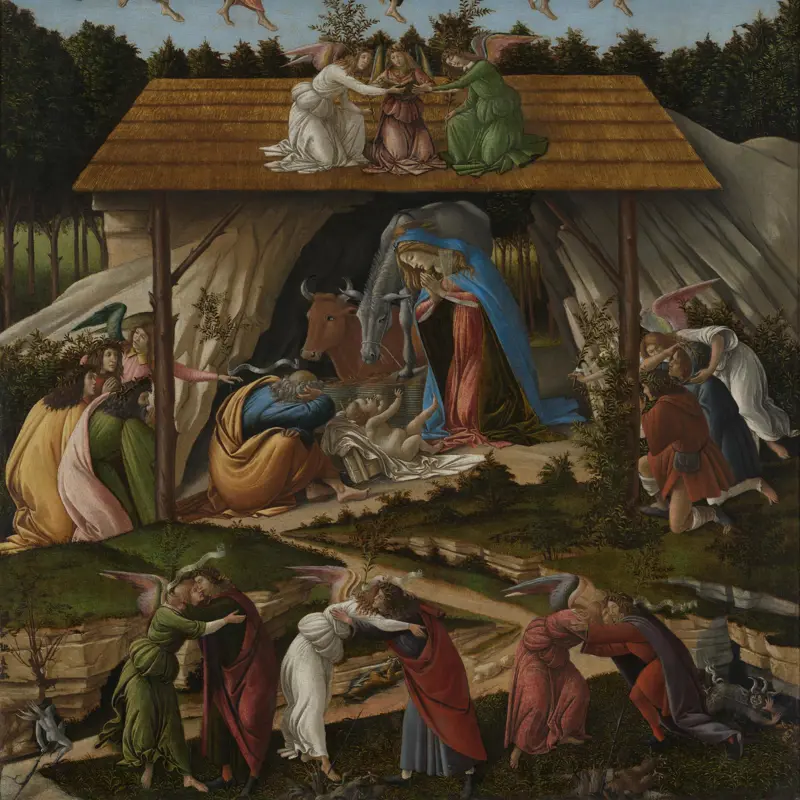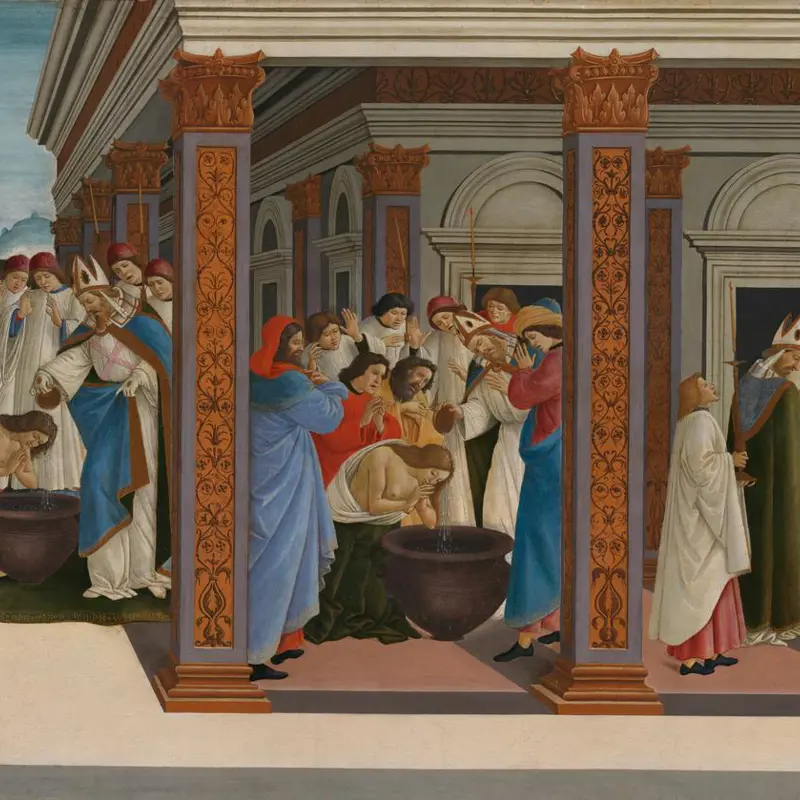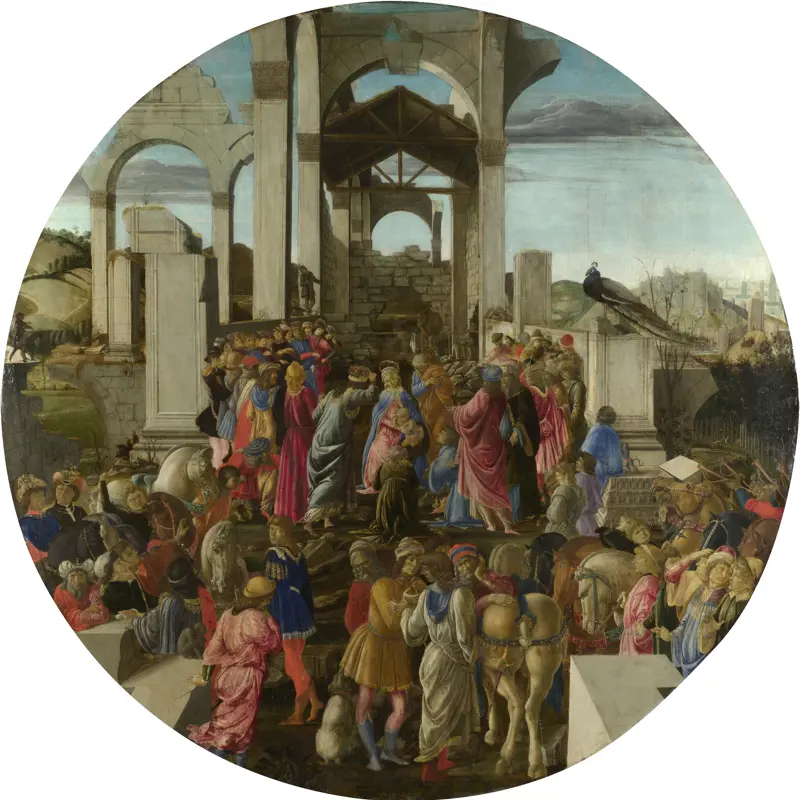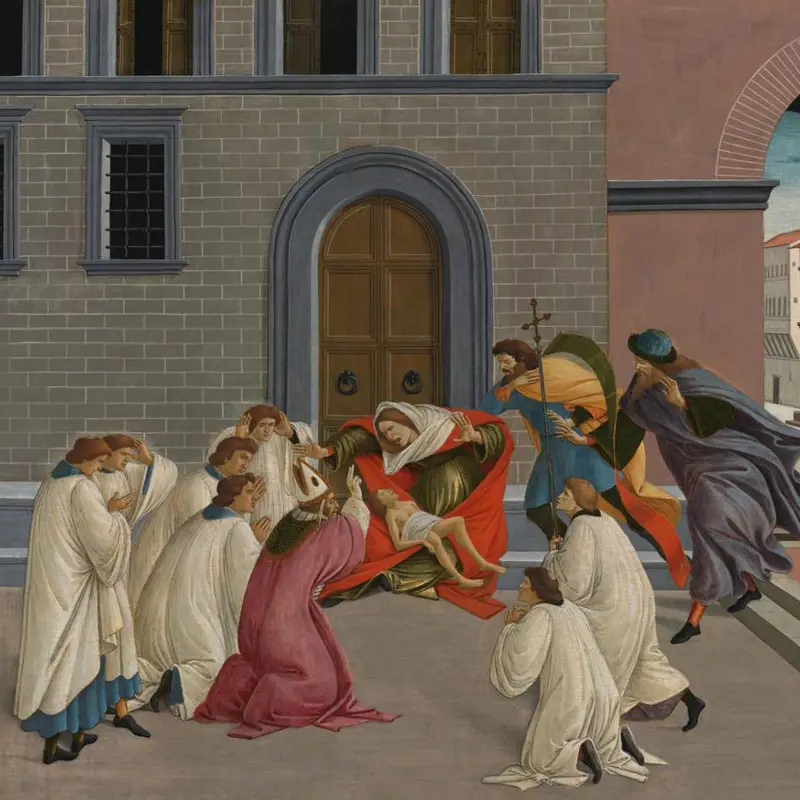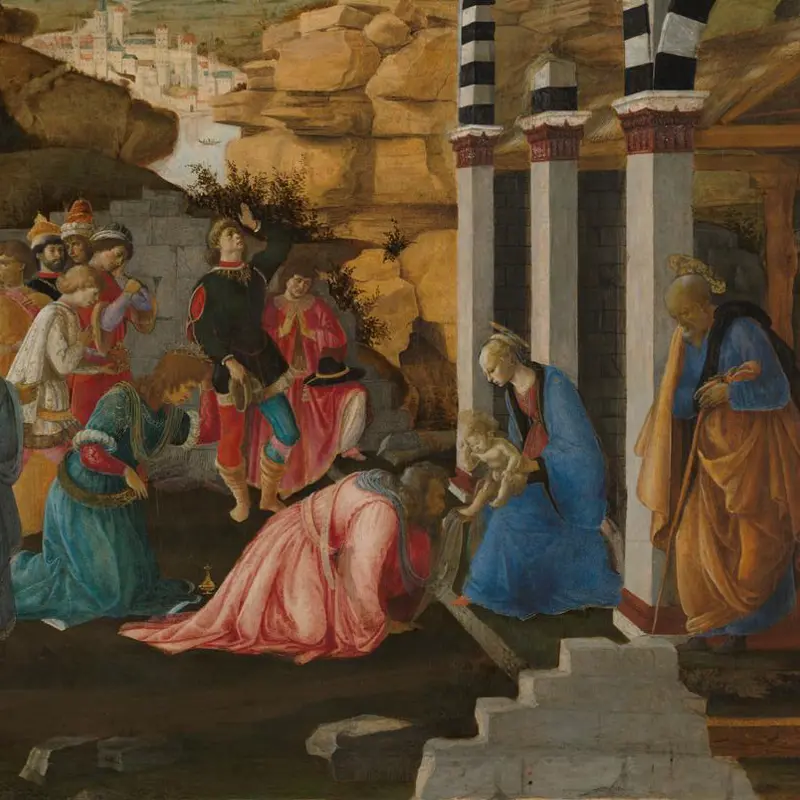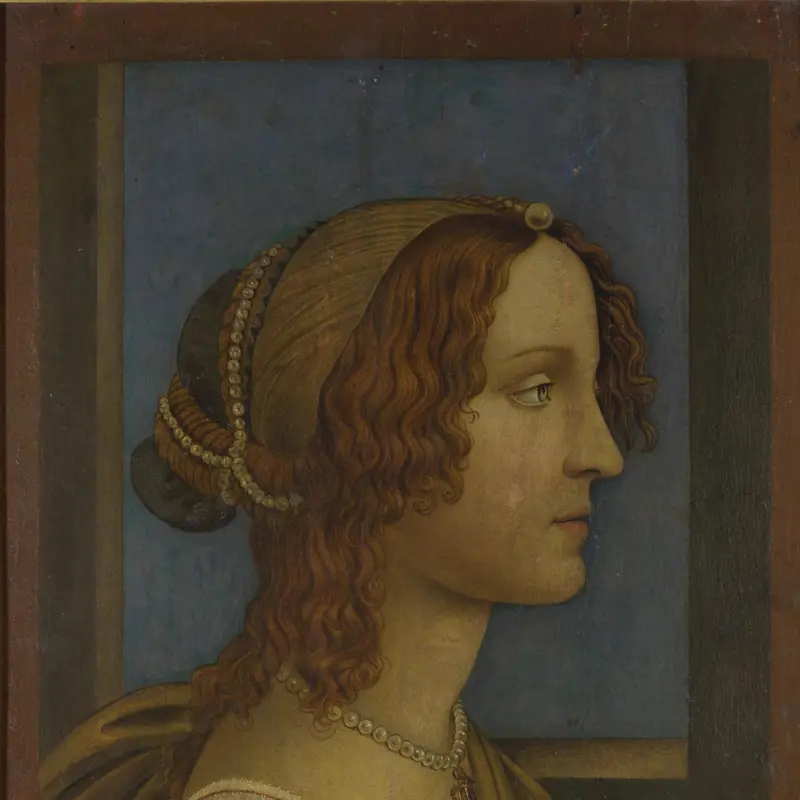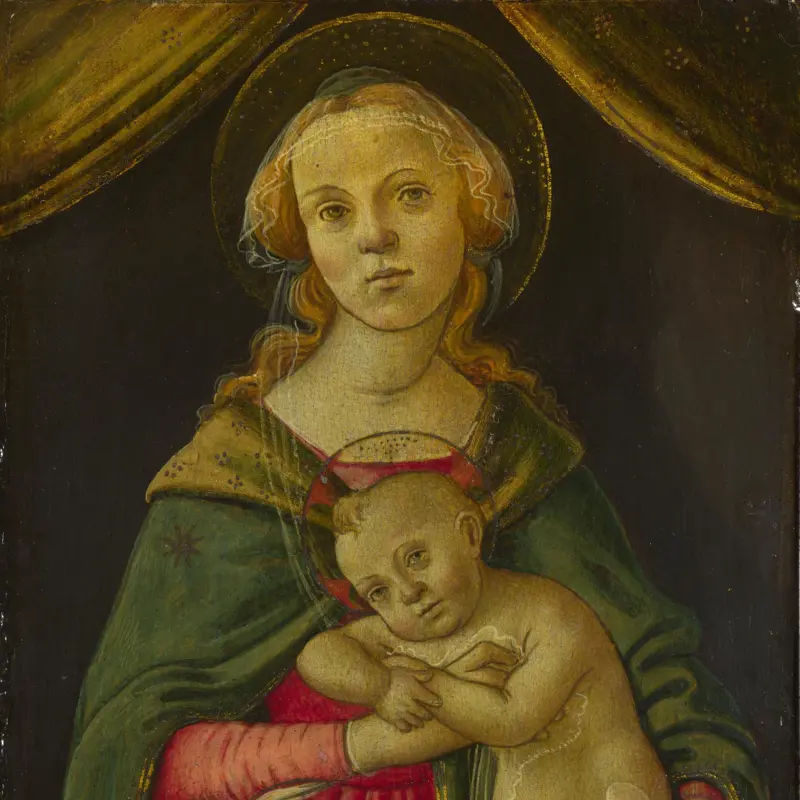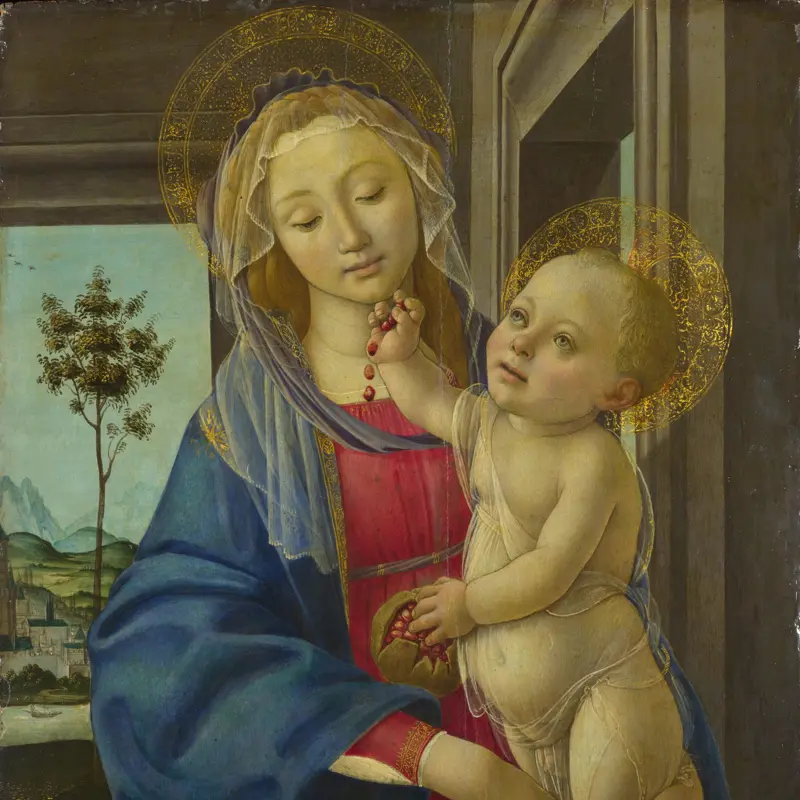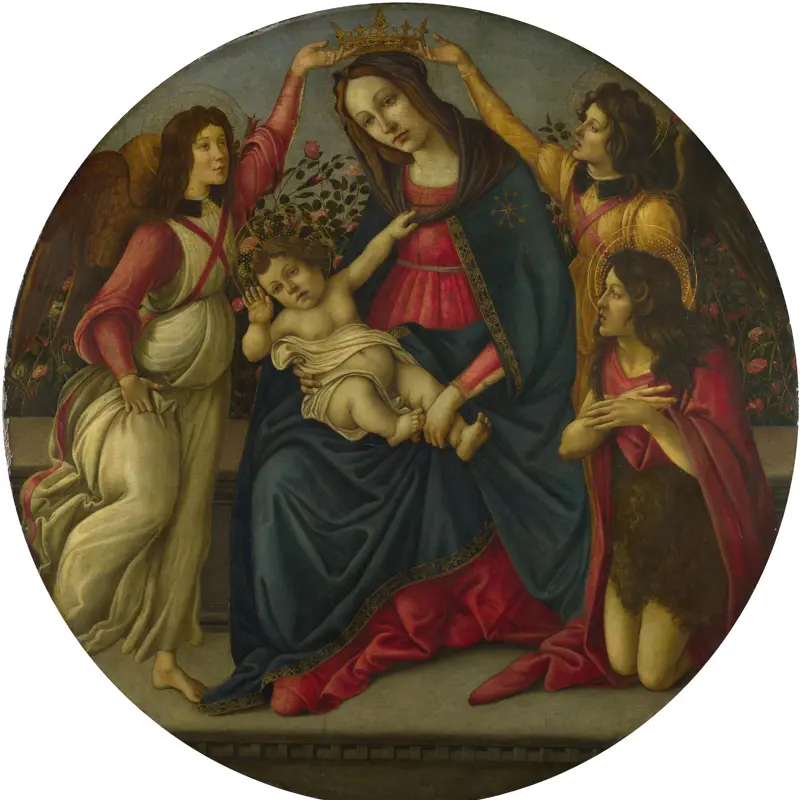Workshop of Sandro Botticelli, 'The Virgin and Child', probably about 1475-1500
About the work
Overview
The Virgin Mary sits in the corner of a simple room, the Christ Child on her lap. She holds him gently with both hands as he presses his cheek to hers and reaches for her breast. The gauzy shirt he wears contrasts with the layers of veils and garments covering his mother.
Light streaming through the open window casts a shadow on the wall behind the Virgin, which seems to be made of the grey sandstone known as pietra serena that was often used as a building material in Renaissance Florence.
Outside, two slender intertwined trees echo the tender embrace of Virgin and Christ Child. A river lined with bushy trees flows through the hilly landscape and past a small town that is surrounded by a crenellated wall.
Key facts
Details
- Full title
- The Virgin and Child
- Artist
- Workshop of Sandro Botticelli
- Artist dates
- About 1445 - 1510
- Date made
- Probably about 1475-1500
- Medium and support
- Egg tempera on wood
- Dimensions
- 83.2 × 64.8 cm
- Acquisition credit
- Bought, 1867
- Inventory number
- NG782
- Location
- Not on display
- Collection
- Main Collection
Provenance
Additional information
Text extracted from the ‘Provenance’ section of the catalogue entry in Martin Davies, ‘National Gallery Catalogues: The Earlier Italian Schools’, London 1986; for further information, see the full catalogue entry.
Exhibition history
-
2018Truth and Beauty: The Pre-Raphaelites and the Old MastersLegion of Honor (Fine Arts Museums of San Francisco)30 June 2018 - 30 September 2018
Bibliography
-
1879G. Frizzoni, 'L'arte italiana nella Galleria Nazionale di Londra', Archivio storico italiano, IV/113, 1879, pp. 246-81
-
1883J.P. Richter, Italian Art in the National Gallery, London 1883
-
1893H.C. Ulmann, Sandro Botticelli, Munich 1893
-
1900C.N. Plunkett, Sandro Botticelli, London 1900
-
1923R. van Marle, The Development of the Italian Schools of Painting, 19 vols, The Hague 1923
-
1925Y. Yashiro, Sandro Botticelli, London 1925
-
1951Davies, Martin, National Gallery Catalogues: The Earlier Italian Schools, London 1951
-
1958R. Salvini, Tutta la pittura del Botticelli, Milan 1958
-
1961M. Davies, The Earlier Italian Schools, 2nd edn, London 1961
-
1970G. Mandel, The Complete Paintings of Botticelli, London 1970
-
1978R. Lightbown, Sandro Botticelli, London 1978
-
1986Davies, Martin, National Gallery Catalogues: The Earlier Italian Schools, revised edn, London 1986
-
2001
C. Baker and T. Henry, The National Gallery: Complete Illustrated Catalogue, London 2001
About this record
If you know more about this work or have spotted an error, please contact us. Please note that exhibition histories are listed from 2009 onwards. Bibliographies may not be complete; more comprehensive information is available in the National Gallery Library.

